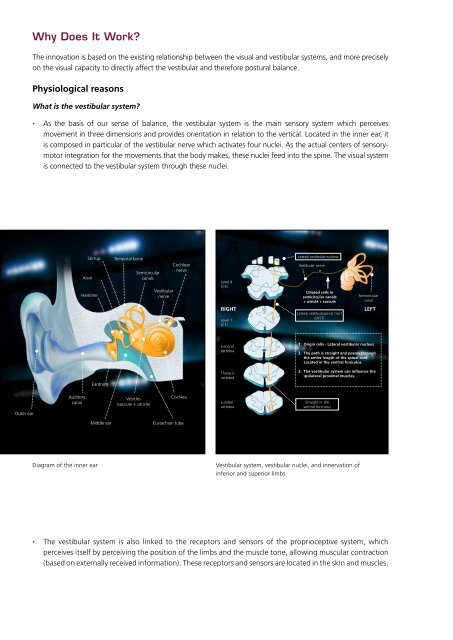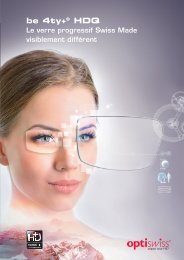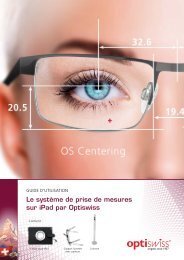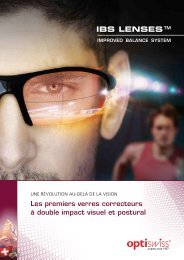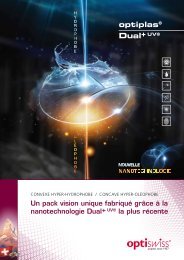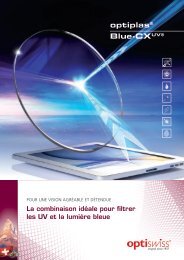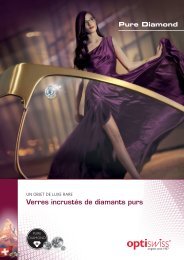IBS Lenses
Create successful ePaper yourself
Turn your PDF publications into a flip-book with our unique Google optimized e-Paper software.
Why Does It Work?<br />
The innovation is based on the existing relationship between the visual and vestibular systems, and more precisely<br />
on the visual capacity to directly affect the vestibular and therefore postural balance.<br />
Physiological reasons<br />
What is the vestibular system?<br />
• As the basis of our sense of balance, the vestibular system is the main sensory system which perceives<br />
movement in three dimensions and provides orientation in relation to the vertical. Located in the inner ear, it<br />
is composed in particular of the vestibular nerve which activates four nuclei. As the actual centers of sensorymotor<br />
integration for the movements that the body makes, these nuclei feed into the spine. The visual system<br />
is connected to the vestibular system through these nuclei.<br />
Anvil<br />
Stirrup<br />
Hammer<br />
Temporal bone<br />
Semicircular<br />
canals<br />
Vestibular<br />
nerve<br />
Cochlear<br />
nerve<br />
Level 4<br />
(C4)<br />
RIGHT<br />
Level 1<br />
(C1)<br />
Lateral vestibular nucleus<br />
Vestibular nerve<br />
Ciliated cells in<br />
semicircular canals<br />
+ utricle + saccule<br />
Lateral vestibulospinal tract<br />
(LVST)<br />
Semicircular<br />
canal<br />
LEFT<br />
Eardrum<br />
Cervical<br />
vertebra<br />
Thoracic<br />
vertebra<br />
1. Origin cells - Lateral vestibular nucleus<br />
2. The path is straight and passes through<br />
the entire length of the spinal cord.<br />
Located in the ventral funiculus.<br />
3. The vestibular system can influence the<br />
ipsilateral proximal muscles.<br />
Outer ear<br />
Auditory<br />
canal<br />
Vesicles<br />
(saccule + utricle)<br />
Cochlea<br />
Lumbar<br />
vertebra<br />
Straight in the<br />
ventral funiculus<br />
Middle ear<br />
Eustachian tube<br />
Diagram of the inner ear<br />
Vestibular system, vestibular nuclei, and innervation of<br />
inferior and superior limbs<br />
• The vestibular system is also linked to the receptors and sensors of the proprioceptive system, which<br />
perceives itself by perceiving the position of the limbs and the muscle tone, allowing muscular contraction<br />
(based on externally received information). These receptors and sensors are located in the skin and muscles.


